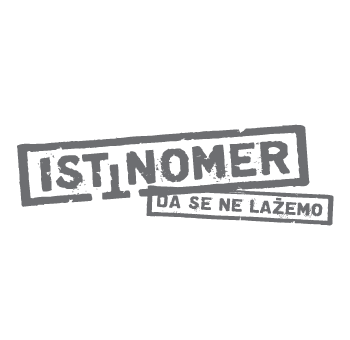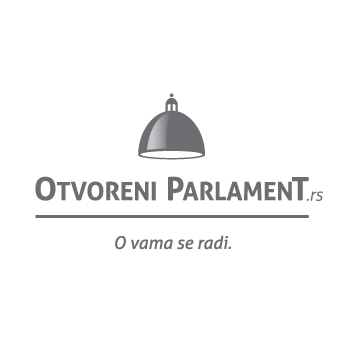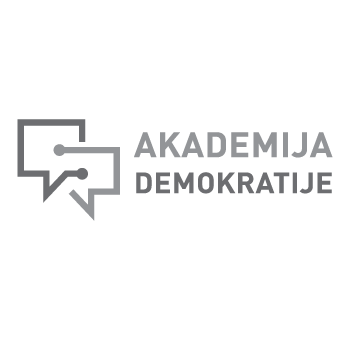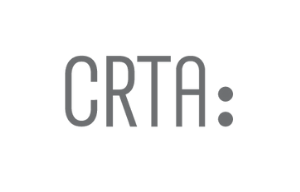Media Monitoring of Political Pluralism: Government in Focus, Opposition Almost Invisible
CRTA’s media monitoring during 2024 shows a troubling backslide in media pluralism standards National television broadcasters favor one political option—the ruling majority—while almost entirely denying the space and voice of the opposition. The dominance of the ruling majority in terms of representation, role, and tone of coverage clearly shows that Serbian citizens do not have access to balanced information. Even the public broadcaster, RTS 1, fails to fulfill its legal obligation to objectively inform the public. RTS 1, much like commercial television stations, devotes nearly all of its primetime news coverage to representatives of the ruling majority, with no notable differences in model or tone of reporting compared to commercial outlets.
Dominance of the Ruling Majority in Primetime News
The ruling majority takes up more than 90% of the airtime in primetime news on national TV stations, while the opposition receives less than 10%. Even more striking is the fact that the ruling coalition not only dominates in presence but also enjoys the privilege of directly addressing the public. In nearly two-thirds (62%) of the total time allocated to political actors, representatives of the ruling majority play an active role, speaking directly to the audience. In contrast, the opposition gets such an opportunity in only 1% of the time. The tone analysis reveals media bias: the ruling majority is predominantly portrayed in a neutral or positive manner, while the opposition is largely presented in a negative light. This pattern is present across all analyzed TV channels, without exception.
TV Channels Uniformly Favor the Government
The common denominator among the five analyzed television stations is the absence of genuine political pluralism and clear media bias in favor of the ruling establishment.
Although RTS 1, as a public service broadcaster, is expected to report in the public interest and maintain an impartial and critical stance toward all political actors, the data shows that its reporting does not significantly differ from that of commercial channels. On RTS 1, 94% of airtime was dedicated to the ruling majority, while the opposition received just 6%, mostly in a passive role—mentioned but without the opportunity to directly address viewers of the main news program, “Dnevnik 2”. While RTS 1’s coverage is slightly more balanced compared to commercial stations, the underlying reporting mechanism remains the same. The ruling majority is covered either neutrally or positively, while the opposition is portrayed far more negatively than positively.
On TV Pink and TV B92, the dominance of the government is even more pronounced—88% of the time on Pink and 92% on B92 is devoted to the ruling coalition. Meanwhile, the opposition is almost entirely excluded from programming or is presented negatively, often through journalist commentary or statements from political actors close to the government. TV Prva allocated 91% of its political coverage to the ruling majority, with just 9% given to the opposition, lacking any meaningful opportunity for active engagement. TV Happy shows one of the most extreme imbalances—95% of the time went to the ruling majority, while the opposition was given only 5%.
Vučić Dominates All TV Channels
More than half of the total airtime devoted to political actors was exclusively dedicated to the President of Serbia. In 2024, Vučić made 354 live appearances on television programs, with an average speech length of 30 minutes. The longest stretch without his appearance was only 14 days, and on one occasion, he appeared live six times in a single day.
Aleksandar Vučić is not only the most present political figure in primetime news, but the coverage of him is also almost entirely favorable . Across all analyzed channels, the President was portrayed in a neutral or positive tone, with virtually no critical reporting. This reporting model confirms Vučić’s position as the central figure in Serbia’s political and media landscape, with unrestricted and regular access to the public.
About the Monitoring Methodology
Throughout 2024, CRTA continued its monitoring of national television stations by tracking primetime news programs. The primary objective of the monitoring was to assess whether all political actors are equally represented, the tone of media reporting about them, and whether political actors are shown in active roles (speaking in the first person) or passive roles (being talked about by others). In this way, CRTA aims to provide insight into the level of media pluralism and the professionalism of media coverage of the political landscape.
CRTA observers, trained according to the highest international standards for media observation, monitored the primetime news on RTS 1, TV Pink, TV Prva, TV Happy, and TV B92.
More information about CRTA’s media monitoring methodology can be found here.
Read the full report here.









